Excerpts from Jim Conrad's
Naturalist Newsletter
from the March 13, 2016 Newsletter issued from Hacienda Chichen Resort beside Chichén Itzá Ruins; limestone bedrock; elevation ~39m (~128ft), N20.675°, W88.569°; central Yucatán state, MÉXICO
POTATOTREE FLOWERING
Among weeds beside an isolated gravel cut road through a low rise with limestone bedrock, a small tree about ten feet tall (3m) bore white blossoms typical of the nightshades, genus Solanum, and large, fuzzy leaves with entire margins like those of mullein. You can see it below:
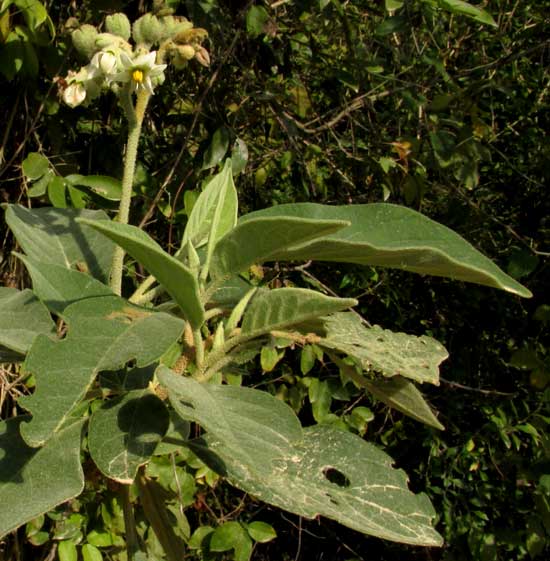
A close-up of a typically Solanum flower nicely displaying the pores at the tip of the yellow anthers' cells, from which pollen pours, is shown below:
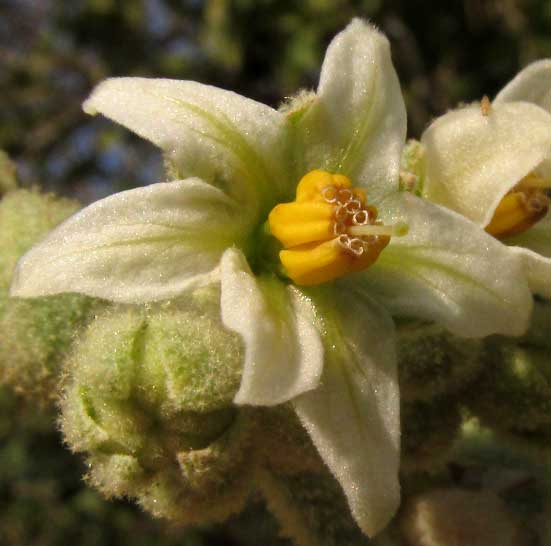
Several inflorescences bore immature, green fruits, shown below:
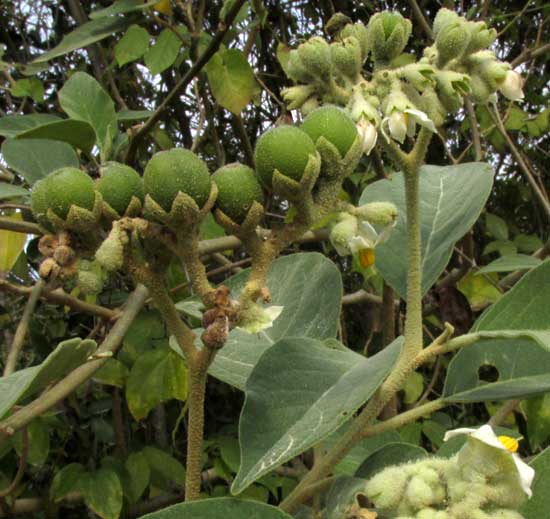
The soft-downy leaves were densely mantled with tiny branched or "stellate" hairs, shown below on a leaf bottom:
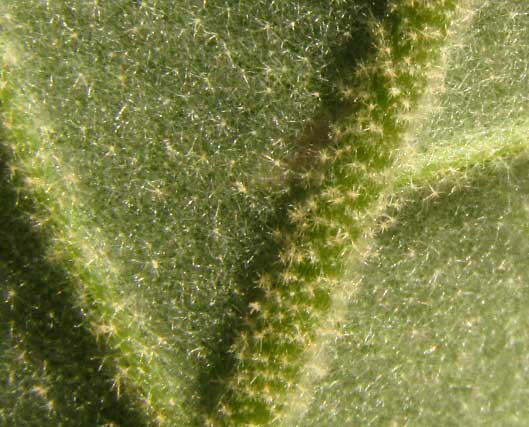
The hairy leaves looked and felt so like those of mullein that the plant reminded me of the Mullein Nightshade we've seen along the Yucatan's sandy Caribbean coast. However, that species is coastal. You can compare our plant with the Mullein Nightshade on its page at www.backyardnature.net/yucatan/solanum2.htm.
Our weedy little tree proved to be SOLANUM ERIANTHUM, in English sometimes called Potatotree, apparently because its crushed or broken roots smell like raw potatoes. Some experts use the binomial Solanum verbascifolium, the name verbascifolium meaning "having leaves like mullein." Potatotree occurs from Texas and Florida south through Mexico and the Caribbean area through Central America into northern South America, plus it's an introduced weed in other tropical parts of the world.
Nightshade species, genus Solanum, are famed for the compounds they contain which, depending on species and amount consumed, can be deadly, hallucinogenic and/or medicinal. The online "Biblioteca Digital de la Medicina Tradicional Mexicana," which calls our plant Berenjena, says that, medicinally, Potatotree mostly is known for its pain-killing, anti-inflammatory and disinfectant qualities, usually its leaves being used. One way to use the leaves is to rub them wet with warm water on the bodies of newborn babies. Other uses include treating diabetes, encouraging appetite and sexual desire, and treating constipation, asthma, impotency, hair loss, and much more.
issued June 1, 2020 from Tepakán Yucatán MÉXICO
POTATOTREE UNDERGROUND RUNNERS
The 10-ft tall Potatotrees behind the stone hut are leafing out, which reminded me that I needed to confirm what I'd read, that Potatotree roots smell like raw potatoes. With a finger I scraped dirt from one side of a plant and exposed a thick, woody, underground runner connecting the first plant to another, and all the plants turned out to interconnected with such runners, a runner shown below:
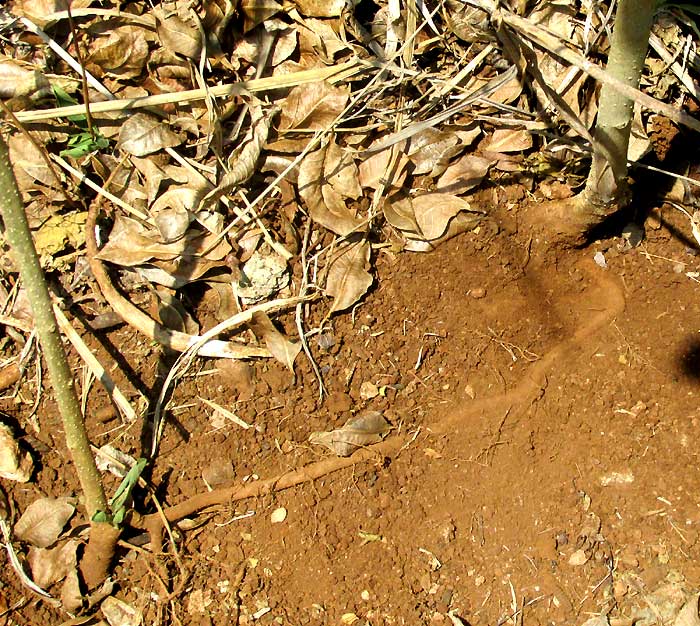
Scraping skin from a runner, nothing smelled like potatoes, but more interesting to me now was finding that my group of Potatotrees was just one plant with a subterranean stem issuing several bush-like, sprouts.